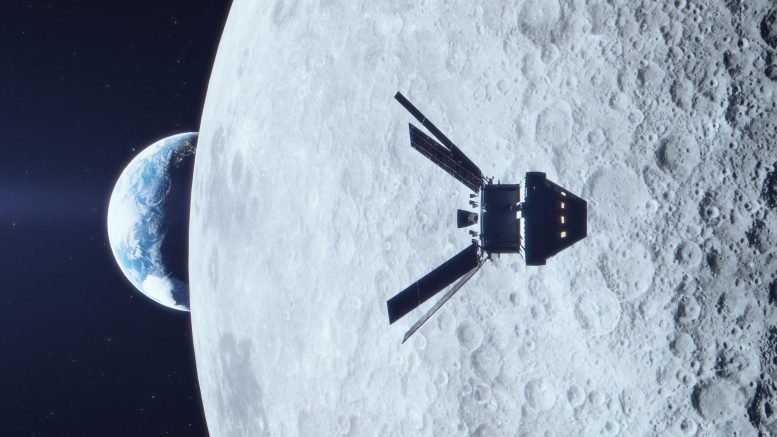
Four astronauts will venture around the Moon in an Orion spacecraft on Artemis II, the first crewed mission on NASA’s path to establishing a long-term presence at the Moon for science and exploration. The approximately 10-day flight will test NASA’s foundational human deep space exploration capabilities, the Space Launch System rocket and Orion spacecraft, for the first time with astronauts. Credit: NASA
Technicians at NASA’s Kennedy Space Center tested Orion’s solar array wing for the Artemis II mission, ensuring proper function for the spacecraft’s propulsion, thermal control, and electrical power. The Artemis II mission aims to validate human deep space capabilities with a 10-day lunar flight test.
Before NASA’s Orion spacecraft for the Artemis II mission can be outfitted with its solar array wings, teams at the agency’s Kennedy Space Center must first verify that the arrays extend and close properly. On March 17, 2023, technicians inside the Florida spaceport’s Neil Armstrong Operations and Checkout Building unfurled one of the wings to confirm all mechanisms operate as expected.
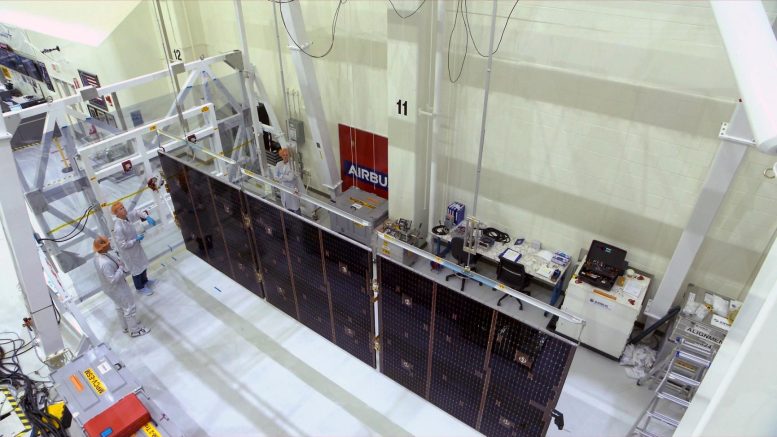
On March 17, 2023, technicians inside the Florida spaceport’s Neil Armstrong Operations and Checkout Building unfurled one of the solar array wings for the Artemis II Orion spacecraft to confirm all mechanisms operate as expected. Credit: NASA/Glenn Benson
Orion will have four total solar wings, drawing in 11 kilowatts of power from the Sun to provide the spacecraft with propulsion, thermal control, and electrical power. The solar arrays will be installed on Orion’s service module – built by Airbus and provided by ESA (European Space Agency) – which supplies life support consumables including water, oxygen, and nitrogen to the astronauts aboard.
Artemis II is the first crewed mission on NASA’s path toward establishing a long-term presence on the Moon. The mission will send NASA astronauts Reid Wiseman, Victor Glover, Christina Hammock Koch, and CSA (Canadian Space Agency) astronaut Jeremy Hansen on a 10-day flight test around the Moon.
Artemis II will launch on the agency’s Space Launch System rocket, prove Orion’s life support systems, and validate the capabilities and techniques needed for humans to live and work in deep space.
View a time-lapse of teams extending the solar array wing here:
The Orion spacecraft, developed by NASA, is designed to transport humans to unprecedented distances in space. As an exploration vessel, Orion’s purpose is to convey astronauts into space, offer an emergency escape option, maintain crew well-being during their journey, and ensure secure re-entry at high velocities from deep space. The spacecraft will be launched aboard NASA’s cutting-edge heavy-lift rocket, known as the Space Launch System.


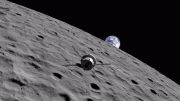

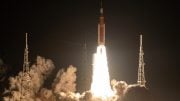

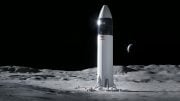
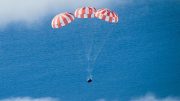
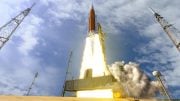
Be the first to comment on "Orion Flexes Its Solar Muscles: Prepping for the First Crewed Artemis Adventure"